Natural Sencha green tea
This Japanese green tea is also known as "hospitality tea". It gives its delicate perfume and its vegetal notes, and a refreshing taste, together with the many benefits for our well-being. In the case of Sencha green tea, we know that the flavor depends on several factors, including where the leaves are grown, the season in which they were harvested and the temperature of the water at the time of preparation.
and natural Sencha tea (free of chemicals and preservatives), is produced with minimal processing and without fermentation. A process that allows the drink to maintain an authentic flavor and high levels of catechins, the component that contributes to its healthy benefits.
Properties and benefits
This tea boasts a remarkable content of beneficial substances such as vitamin C, polysaccharides and catechins. Natural Sencha green tea is a concentrate of antioxidants, which strengthen the immune system and counteract cellular aging. Among the many solutions to enhance natural defenses, some drinks such as Sencha green tea can be valid for the content of polyphenol content (catechins). The antioxidant properties also have a beneficial effect on our immune system, counteracting the harmful action of free radicals and premature aging of cells. The benefits of Japanese green tea leaves represent a natural stimulant, thanks to the caffeine / theine content.
Unlike coffee, Sencha green tea gives energy, without providing the side effects such as agitation and headaches. A cup of Sencha green tea is an excellent choice, therefore, to get energy without the stress of a high caffeine content.
An excellent alternative for those who want to reduce coffee consumption, while maintaining the energizing benefits.< /p>
The Sencha green tea awakens the senses, while respecting the body. Releases caffeine / theine into the body gradually over 6 hours, stimulating concentration and attention. In any case, to avoid difficulty falling asleep, it is good to drink Sencha green tea before 5.00 pm. Choosing an Sencha tea is also recommended to get a caffeine-free amount, green tea without elevating blood pressure – beneficial for those at risk of hypertension. To take full advantage of the properties of this green tea, it is recommended to drink it after meals for its beneficial effects on digestion - particularly recommended after a large meal, or in case of digestive difficulties.
We know that Sencha green tea is an excellent source of tannins, flavonoids, amino acids: nutrients that contribute to a well-balanced microbiota, and well-being intestinal. Drinks containing caffeine, including green tea, are also believed to be excellent for stimulating the metabolism, improving the passive burning of fat in the body.
If it is combined with a balanced and varied diet and sporting activity, Sencha helps in slimming diets thanks to the antioxidants (polyphenols) which promote fat burning and an active metabolism. The catechins contained in this tea are studied for the possibility of influencing the metabolism of lipids, decreasing the absorption of fats - therefore of triglycerides and cholesterol. At the same time, Sencha is a natural diuretic, which allows excess fluids to be drained naturally, with detoxifying and slimming results. The high levels of vitamin C and a number of antioxidants make this tea a support for the immune system, the beauty of the skin, oral health against bad breath. In terms of aromatherapy, natural Sencha tea is considered for its aroma which can have beneficial effects on mood, and is sometimes used to perfume the environment in a refined way.
Origins and History of cultivation
Sencha tea is a Japanese ryokucha green tea, prepared with the whole leaves of the Camellia sinensis plant. The delicious, bitter-sweet and relaxing flavor was immediately appreciated once you chose to prefer steamed tea over ground matcha. While matcha green tea is prepared by mixing powdered Japanese green tea with hot water, a cup of sencha is prepared by steeping tea leaves in hot water.
In the 17th century this pthe practice of obtaining the infusion of tea from the tops and leaves of the plant, immediately harvested and then cooked. Subsequently, they were rolled up and then dried. A tea obtained from it is yellow in color and is produced from the tops and leaves of tea plants. Natural Sencha green tea refers to a type of tea that is not treated or processed, better retaining its nutrients and active ingredients.
There are many types of Sencha tea.
Shincha: the new tea with a sweeter taste, it is harvested in spring as soon as leaves and buds appear.
Asamushi sencha: A lightly steamed sencha green tea with a mild flavor.
Fukamushi sencha: strong tea obtained by macerating the leaves for a longer period, with a dark color and a full-bodied flavor.
Chumushi sencha: sencha tea made from a blend of asamushi and fukamushi teas. Moderately steamed, it displays a yellowish-green color and a slightly buttery flavor. The Sencha version of green tea makes up about 80% of the tea produced in Japan, a major tea consuming country. and natural tea is a smaller and special production.
Plant and flowers
The evergreen Camellia sinensis plant is the most cultivated species of the Camellia genus, belonging to the Theaceae family. It is the most important, since the tea drink is obtained from its shoots. The shrub displays bright green leaves and flowers in autumn, with white flowers. Depending on the degree of fermentation of the harvested and dried buds, tea is classified into three groups: green tea (without fermentation), oolong (semi-fermented) and black (fermented). Camellia sinensis grows from sea level up to 2,200 m in height, developing best in acid soils, in a climate with abundant rainfall and mild temperatures (18 to 25°C). The plant has been cultivated in Asia for over 3,000 years, and today about 89% of tea cultivation takes place in Southeast Asia (China, Sri Lanka and Indonesia), as well as Kenya and India.
Nutritional values of natural Sencha green tea
The health benefits derived from Sencha are largely due to the antioxidants present in these leaves. Green tea contains high concentrations of the antioxidant EGCG (epigallocatechin gallate) and polyphenol catechins (epigallocatechin-3-gallate EGCG, epigallocatechin EGC, epicatechin EC). Furthermore, it makes available saponins and mineral salts such as potassium, calcium and phosphorus. It also contains caffeine, and other methylxanthines such as theobromine and theophylline. This green tea is rich in substances such as the amino acids theanine and arginine, vitamins including beta-carotene and vitamin A, vitamin C and B vitamins (including folic acid or vitamin B9). It also offers the body caffeic and chlorogenic acid.
How to prepare Sencha green tea
The way Sencha is prepared (dosage, water temperature and infusion time) affects the taste. At higher temperatures the green tea will have a stronger and more bitter taste, and with a longer infusion time. At lower temperatures and with a shorter infusion time, Sencha takes on a more delicate and slightly sweet flavour. The most classic infusion, from which to vary, is obtained by placing about 3-5 grams of green tea in a cup (250 ml). Water at a temperature of 80 °C. Leave to infuse for 2 to 3 minutes, before drinking the Sencha green tea infusion.
Sencha green tea: side effects and contraindications
Sencha green tea, natural and from cultivation, is safe to consume if you do not exceed the quantities. The effects of drinking tea have contraindications related to caffeine, including nervousness or agitation, headache, diarrhea, difficulty falling asleep. Even though Sencha tea has an average level of caffeine, those who are sensitive to this substance should be careful. Additionally, the tannins in tea can cause nausea and heartburn if green tea is consumed in large quantities. In case of iron deficiency, it is advisable to pay attention since the catechins of green tea in high quantities can limit its absorption in the body.
Caution is advised in taking green tea during pregnancy and breastfeeding .


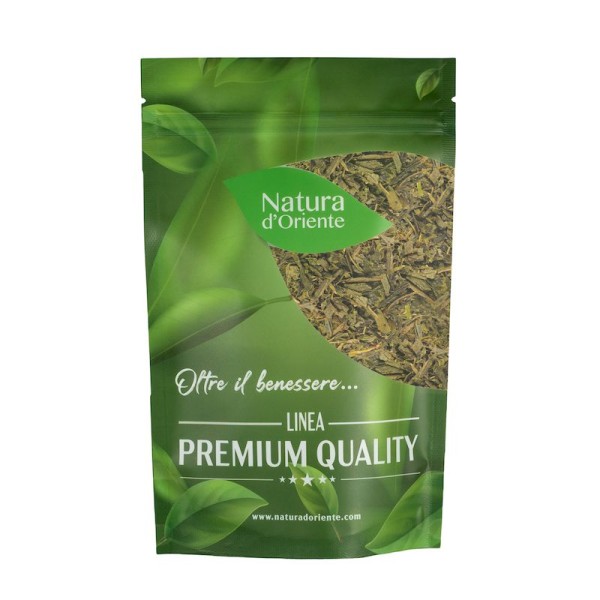






 No reward points for this product.
No reward points for this product.



![Ginseng and ginger green tea [Natura d'Oriente]](https://www.naturadoriente.com/3367-home_default/Green-tea-ginseng-ginger.jpg)


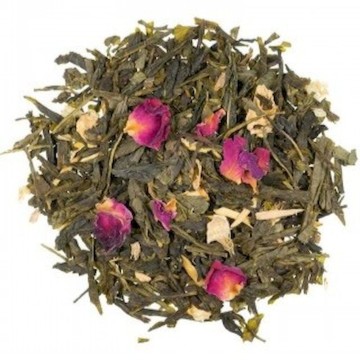
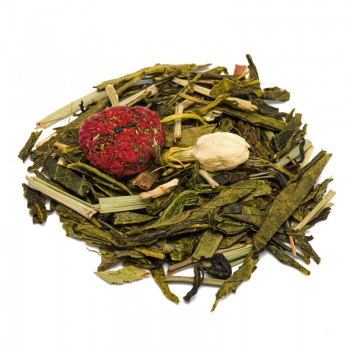

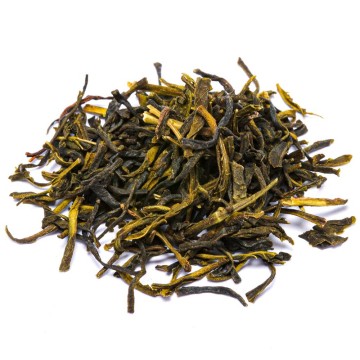


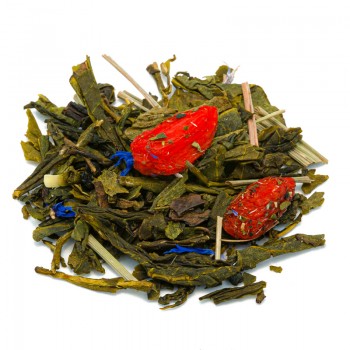
![Green tea with orange and grapefruit [Natura d'Oriente]](https://www.naturadoriente.com/3376-home_default/green-tea-with-orange-and-grapefruit.jpg)

![Green Tea Ceylon Melfort Special [Natura d'Oriente]](https://www.naturadoriente.com/3378-home_default/-green-tea-ceylon-melfort-special-.jpg)